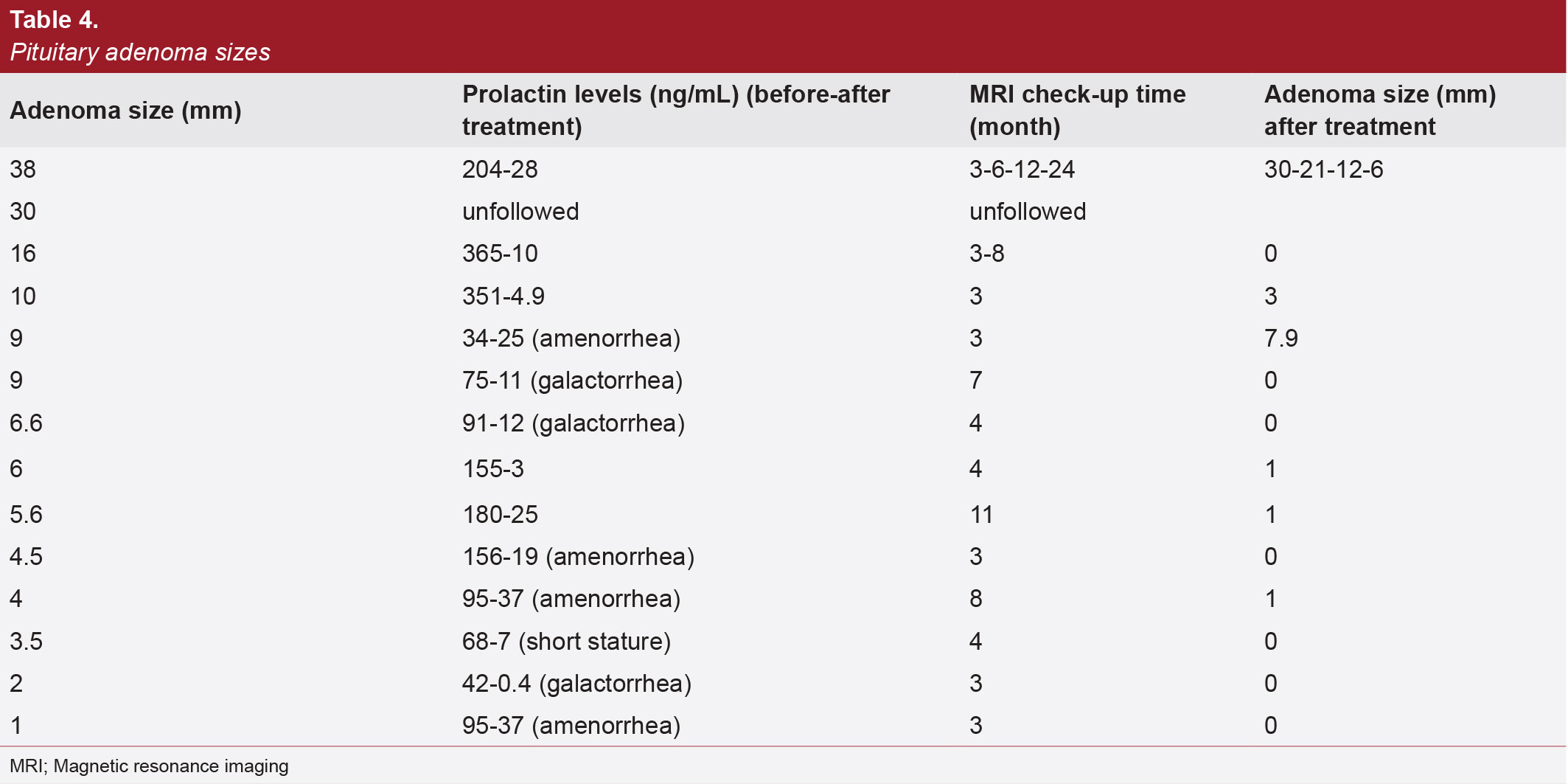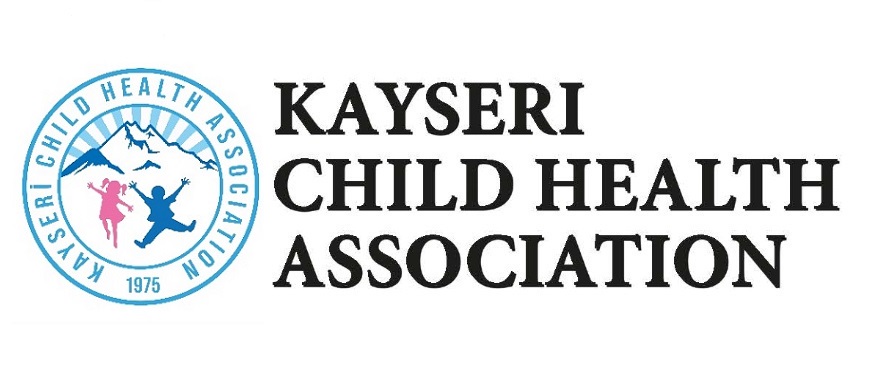Pediatric Hyperprolactinemia: Clinical Features, Diagnostic Groups, and Treatment Approaches
Hyperprolactinemia in Childhood
DOI:
https://doi.org/10.4274/jpea.2025.389Keywords:
Childhood, galactorrhea, hyperprolactinemia, prolactinomaAbstract
Hyperprolactinemia (HPRL) is a rare endocrinopathy in childhood caused by tumors, pituitary stalk interruption, and systemic diseases. In this retrospective study, we examined the clinical characteristics of pediatric patients with prolactin (PRL) elevation. The study examined 70 pediatric and adolescent patients with elevated PRL. The patients (52 female, 18 male; age range, 0.03-18) were divided into two groups: Physiological (n=46, 65.7%) and pathological (iatrogenic+sellar mass) (n=24, 34.3%) HPRL. Six patients (8.6%) were included in the pathological group due to iatrogenic causes and 18 patients (25.7%) due to a sellar mass. Subdiagnostic groups were found in the pathological group: 14 patients with prolactinoma (10 microadenomas; 4 macroadenomas), 6 patients with drug-induced HPRL, 2 patients with craniopharyngioma, 1 patient with dysgerminoma, and 1 patient with tuberculoma. Symptoms such as headache (p=0.004), galactorrhea (p=0.000), amenorrhea (p=0.037), and menstrual irregularity (p=0.037) were more common in the pathological group. Short stature and early thelarche complaints were more common in the physiological group (p=0.004, p=0.045, respectively). The presence of galactorrhea was significant in predicting pathological PRL elevation (p=0.002) (odds ratio=56.1%, 95% confidence interval=4.33-728.1). Twenty-seven point one percent (n=19) received cabergoline treatment, and 8.5% (n=6) received levothyroxine treatment. Three patients underwent surgical treatment for dysgerminoma and craniopharyngioma, respectively. The probability of detecting HPRL is high in the presence of galactorrhea. In prolactinoma, if there are significant pituitary compression symptoms, the disease can be controlled with medical treatment.

Downloads
Published
How to Cite
Issue
Section
License
Copyright (c) 2023 The Journal of Pediatric Academy

This work is licensed under a Creative Commons Attribution-NonCommercial-NoDerivatives 4.0 International License.








